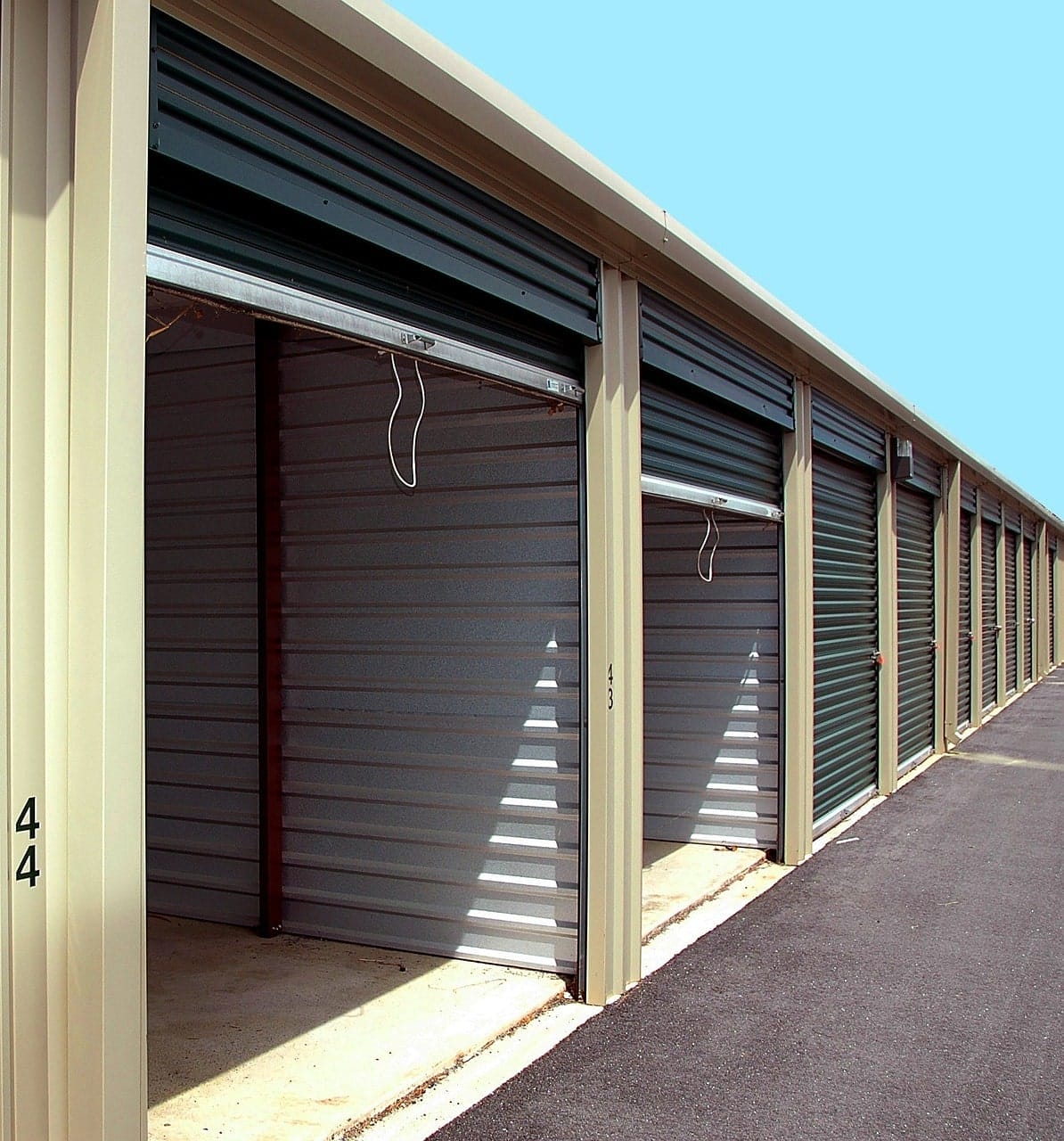The demand for self-storage is growing, and this upward trend will continue for years. With so much competition among self-storage providers, how will potential customers find you? The answer is Google Ads.
Read on this Google Ads for Self Storage Businesses guide to start your google ads campaigns.
Table of Contents
ToggleWhat is Google Ads?
Google Ads is a powerful marketing tool that can help your self storage business be found by the right customers at the right time. It increases your company’s visibility when potential clients are actively looking for self storage solutions.
As consumer choices are increasingly shaped by the internet, businesses need to utilize Google Ads to effectively reach and engage with their target audience.
Using the steps outlined in this guide, you can reach more potential customers, increase occupancy, and track results for your self storage campaign.
Let’s make it happen!
Google Ads for Self Storage: Step-by-Step Procedure
1. Sign up for Google Ads
- On your web browser (e.g., Google Chrome, Microsoft Edge, Safari, etc), type in ads.google.com or simply click this highlighted text: Google Ads.

- You will then be redirected to the Google Ads page. As you can see, Google Ads offers up to $1500 in Ad credits.

- You can choose from the three offers below. You will get your ad credit once you reach the minimum ad spend amount for the offer you chose. Note: Only new advertisers are eligible for this offer.

- Once you have chosen any of the credit offers, you will be required to sign in using your Gmail account. If you prefer not to sign up for the credit offers, click Start Now to begin. Either way, you still need to sign in to your Gmail account.

- If you do not own a Gmail business account, you can create one. If you already have, you can now sign in.

- Way to go! Next, make sure to select expert mode, which will be marked at the bottom of the “Create your first campaign” button. Enabling expert mode provides a more detailed and comprehensive look for your account. If you don’t see it yet, you can adjust the settings once you’re in. Once done, select Create your first campaign.

- You will be asked to provide your business name (optional) and choose one of the three actions you want people to take after seeing your ad. For this guide, we want customers to visit the website to learn more about the company. Select ‘Your Website’ and enter your website link. Then, click ‘Next‘.

- Finally, you will need to provide your payment information to gain access to the platform.

- A manual payment is required. The minimum is $10. Once everything is ready, click ‘Continue‘.

Congratulations! You already have a Google Ads account. Please answer the following prompt, and then you can begin setting up your campaign.

Boost your bookings this month with a free Google Ads strategy consultation with us.
2. Create Your Google Ads for Self Storage Businesses
You can begin creating your first Google Ads for self storage businesses by clicking either the ‘Create‘ button on the left-hand side or the ‘New Campaign‘ button. Both options will take you to the same place.

Campaign Objective
This campaign requires you to choose just one objective from seven options. What do you want to achieve? Do you simply want to increase store visits, or are you focused on attracting the right people to your website?
Sales
Ultimately, businesses aim to increase sales. If your goal is to drive immediate sales online, in-app, by phone, or in-store, select ‘Sales’ as your objective.
Leads
While ‘Sales’ focuses on immediate purchases, building long-term customer relationships is crucial. ‘Leads’ is a suitable objective for businesses like self storage services, allowing you to collect customer contact information for future marketing efforts.


Campaign Type
Next, you will choose the specific type of campaign you want to run. The campaign type you select determines the specific setup options available, ensuring your campaign aligns with your goals.
You can choose one or more advertising goals. Google Ads will then provide relevant suggestions based on your selected goals as you continue using the platform.
Search
It’s generally recommended to select ‘Search‘ as your initial campaign type. Other options, such as display networks, may include platforms like Facebook, YouTube, and partner websites. However, these platforms may not reach your ideal customer base, potentially resulting in low-quality leads.
To ensure you reach individuals actively searching for your services, ‘Search‘ is the most effective starting point.

Campaign Name
You may disregard “Select the ways you’d like to reach your goal“. Now, you will give your campaign a name. While Google Ads provides a default name, it is best to choose a descriptive name that reflects the campaign’s focus. This helps you easily locate the campaign within the account.
Remember, your campaign name is not displayed to customers.

Bidding
Google Ads offers various bidding strategies, each with its own focus. Many advertisers prioritize clicks, impressions, conversions, or video views.
Since you’re using Google Ads, you likely have specific goals for your campaigns. Your bidding strategy should align with these goals.
You can prioritize different aspects when bidding depending on your campaign type. Let’s explore these options in more detail.
Clicks
If your primary objective is to drive website traffic, focusing on clicks is a good starting point. Cost-per-click (CPC) bidding ensures you only pay when someone clicks on your ad, directing them to your website.
Impressions
If your campaign solely targets the Search Network and your main goal is to increase brand visibility, consider “Target Impression Share.” This strategy allows Google Ads to automatically adjust your bids to achieve the desired level of ad visibility.
Conversions
This advanced bidding method, known as Cost-Per-Action (CPA), allows you to set a maximum price you’re willing to pay for a desired action on your website. This action, often a sale, could also be an email sign-up or another specific goal.
While you pay for engaged views and clicks on Display ads, Google Ads automatically adjusts your bids to maximize conversions while staying within your specified CPA budget.
As this is your first campaign, ‘Click’ serves as a starting point for your bidding strategy. Eventually, though, you’ll want to have call tracking and conversion tracking set up and bid on cost per conversion.

Increase your visibility and drive more customers to your self storage facility.
Schedule Your Free Google Ads Consultation Today!
Campaign Settings
For the campaign settings, it’s advisable to uncheck the ‘Google Search Partners Network‘ and ‘Google Display Network‘ for the most part. Sometimes, the Google Search Partners network can get you more leads at a lower cost, but a lot of times, it’ll get you lower quality clicks. It really depends on who is part of the Google Search Partners network at the moment. Sometimes Yelp or DuckDuckGo are in it, and it gets really good leads, but other times it’s just third-party directories with low-quality leads.
To ensure a strong return on investment, focus your initial efforts on reaching high-intent leads. Displaying your ads on partner networks and display networks may lead to lower-quality leads and potentially lower revenue.

Locations
Next, specify your target locations. Your ads will be shown to customers located in your target areas or to those who have selected your target language in their browser settings.

To maximize the effectiveness of your campaign, focus on ‘Presence: People in or regularly in your included locations’. These individuals have a higher likelihood of needing your services compared to those simply expressing interest in the location.
You can use the “Advanced search” option to define the exact service radius.

You can include more locations within your coverage area.

You can also exclude specific areas from your campaign if the demographics of those areas aren’t your typical customers.
Therefore, if you have concerns about certain areas due to security, safety, or other business-related factors, you can exclude them from your campaign targeting.

Languages
It is recommended to select the primary language you use to serve your customers. Choose English as your target language. While you can include other languages, it’s often best to create separate campaigns for each language to ensure optimal targeting and performance.

Broad Match Keywords
Specify the start and end dates for your ad campaign. It’s advisable to choose dates that align with your staffs’ availability to handle incoming calls and inquiries from leads.

Keyword and asset generation
The only required detail here is the final URL for your website. If you do not have a website, you can refer to the steps on How to Run Google Ads Without a Website. You can also add a description of the services you offer and what makes you stand out among other self storage companies.

Ad Group
Ad groups in Google Ads are used to categorize and target ads for similar services. Each ad group has an associated bid, which represents the amount you’re willing to pay for a single click on your ad. This is called a cost-per-click (CPC) bid. You can also set individual bids for specific keywords within the group. By organizing your ads into groups based on common themes, you can more effectively manage and target your campaigns.
Keywords
Now, let’s focus on the core of your campaign: keywords. These are words or phrases that trigger your ads when someone searches for them on Google. Google will match search terms to the keywords you’ve selected for your ads. You can create multiple ad groups to experiment with different sets of keywords and see which ones perform best.

Your ad is eligible to appear based on the similarity of your keywords to the person’s search terms, as well as your keyword match types. Keywords are also used to match your ad to sites in the Google Network that are related to your keywords and ads.
The following images display the estimated monthly search volume and CPC figures for potential search terms that storage customers might use. This data was sourced from the Surfer SEO Chrome Extension, providing insights into keyword demand and advertising costs.

A highly-converting keyword list is essential for ad performance. Using relevant keywords can improve your ad position and potentially lower your costs. On the other hand, poorly chosen keywords can lead to higher costs and lower ad visibility.

Please note that search volume and CPC data are subject to fluctuations and may vary depending on the specific time period and location.
Negative Keywords
Additionally, you can add negative keywords to your campaign. Negative keywords act as filters, excluding your self-storage ads from appearing for specific search queries not related to the services you offer, but may have the same term used.
You don’t want your self storage ad to come up when someone searches for “storage bins” or “storage containers”. These searches likely indicate they’re interested in portable storage solutions, not traditional self storage units. Clicking on your ad in this case would cost you, without generating a potential customer.
To add negative keywords to your campaign, click on ‘Tools‘. Head over to ‘Shared Library‘, click on ‘Exclusion Lists’.

Landing Page
Your final URL is the webpage where people land after clicking on your ad. This landing page should be designed to convert visitors into leads. To achieve this, it needs to include key information like a phone number or contact forms, making it easy for visitors to take the next step.

When creating a landing page, you must include these essential elements:
- Headline: must include keywords related to self-storage service.
- Hero Image: strong visual pitch.
- Social Proof or Testimonials: can build trust and convince visitors to book.
- Unique Selling Proposition: gives your self storage company an edge over others.
- Key Benefits: the value you deliver in solving customers’ problems.
- Call-to-action buttons: available for customers to reach out quickly.
- Contact Lead Form: Keep information requests short.
- Address Possible Concerns
Here’s an example of a self storage landing page:




If you need assistance in creating your landing page, contact our experts.
Headlines
Headlines are the most eye-catching element in your text ad. They appear above the description and are what users see first. You can have 3 up to 15 headlines in your ad. When a headline is pinned (as the image below shows), it is fixed in its position, preventing other headlines from occupying that space.

Why are Headlines important?
A successful Google Ads for self-storage businesses is built on a strong foundation of effective headlines.
- Grab attention: A compelling headline is more likely to be noticed and clicked on.
- Improve Click-Through Rate (CTR): A higher CTR means more people are interested in your ad, which can improve your ad’s quality score and lower your overall costs.
- Target Audience: Effective headlines use keywords ad language that resonate with your target audience.
- Influence Quality Score: Google Ads uses a quality score to determine ad position and cost. A high-quality ad, including strong headlines, can lead to a better quality score, which can lower your cost-per-click (CPC).
Descriptions
Descriptions serve as supporting text, positioned below the headline in your text ads. In this section, you will highlight what makes your self storage facility unique and valuable to your customer base.
You can have 2-4 descriptions in your campaign, each with a character limit of 90.

Sitelinks
Sitelinks essentially expand your text ad by adding clickable links to specific pages on your website directly within the ad itself. It enables your audience to easily discover more about your self storage services.

Callouts
Callouts provide valuable extra information to self storage seekers, highlighting popular features, special offers, or unique aspects of your business. You can add lines for example, “24/7 Secure Access”, “Climate-Controlled Units”, “First Month Free”, “Newest Facility in Town”, or “No Deposit Required”.
Tips for Creating Effective Callouts:
- Keep it concise: Use short, impactful phrases.
- Focus on customer benefits: What’s in it for the customer?
- Use keywords: Include relevant keywords to improve ad targeting.
- Test and Refine: Regularly analyze your callout performance and make adjustments.
By using a combination of these callout assets, you can make your self-storage ads more informative and engaging, leading to higher click-through rates and more conversions.

Budget
Google Ads provides a budget estimate for your ad campaign, indicating the expected performance over a week. A very low budget may limit your ad’s visibility, resulting in fewer clicks and potential leads. You can start with Google Ads’ recommended budget and adjust it later based on your campaign’s actual performance.
Once you have set your budget, you can proceed to the next step.
Note: Google Ads doesn’t allow you to directly set a monthly budget. Instead, you set an average daily budget. To estimate your monthly spending, multiply your daily budget by the number of days in the month.

Ready to Boost Your Self Storage Occupancy Rates with Google Ads?
3. Publish Your Self Storage Campaign
Before publishing your first self storage Google Ads campaign, carefully review these crucial factors:
- Define Clear Objectives and Target Audience: What is your goal? Self storage companies aim to increase occupancy rates. It can be achieved by generating leads (phone calls, online inquiries). Who are your ideal customers? You must consider demographics, location, and specific needs.
- Keyword Research and Selection: Your campaign must have a comprehensive keyword list. You will need to brainstorm relevant keywords:”[City] storage units”, “student storage”, “business storage”, “climate controlled storage”. Use Google Ads Keyword Planner to research search volume, competition and related terms. Organize keywords into ad groups with similar themes (e.g., “unit size”, “location”, “special offers”).

- Compelling Ad Copy: Headlines must be catchy and relevant to what user searches. Descriptions expand the headline, so include key features, special offers, and a clear call-to-action. Utilize Ad Extensions: Sitelinks, Callouts, and Location Extensions.
- Budget and Bidding Strategy: Set a realistic daily budget. Start with a lower budget and gradually increase it based on performance. Choose a bidding strategy: Manual CPC (Set your own cost-per-click), Automated bidding strategies (Maximize clicks, Target cost-per-acquisition, Maximize conversions).
- Location Targeting: Precisely target your service area. Use locations extensions (display address, phone number and map location). Consider radius targeting to reach ideal storage customers within a designated distance from your facility.
- Tracking and Measurement: Monitor website conversions (form submissions, phone calls), observe key performance indicators (click-through rate, cost-per-click, conversion rate, Return on Ad Spend)
- Thorough Review and Testing: Double-check all campaign settings. Regularly analyze your campaign data and make adjustments as needed.
Final Check: Review all campaign details thoroughly. If no issues identified, you can now publish your first self storage campaign.



Ensuring High Occupancy Rates
There are key considerations in running Google Ads for Self Storage Businesses to ensure occupancy rates.
Conversion Tracking
- Conversion Tracking is absolutely critical for your Google Ads for Self Storage Businesses account. By tracking conversions, you gain invaluable insights into campaign performance, allowing you to determine areas for improvement and grow your Return On Investment (ROI).


Conversion Rate
- Conversion Rate measures the effectiveness of your website in converting visitors into leads. This involves encouraging actions like form submissions or phone calls. A poorly designed website can significantly hinder this process.
- Your landing page is your digital storefront. It should communicate your business’s value proposition and guide visitors towards desired actions, such as making a reservation or requesting a quote. Visitors expect fast-loading websites. Slow loading times can frustrate users and cause them to quickly leave your site, ultimately increasing your cost-per-click.
Ad Copy
- Your Google Ads for Self Storage Businesses needs to be more compelling than your competitors’.
Think of your ads as your first impression.
You want to make a strong and lasting impact on potential storage customers. By highlighting your unique features, offering compelling deals, and creating a sense of urgency, your ads can drive more leads, help increase occupancy rates, and as a result, generate more revenue for your self storage business.
Track Campaign Results
Tracking the result of your Google Ads for self storage campaign is very important for several reasons:
Measure ROI (Return on Investment)
You need to know if your ad spend is actually generating revenue. Tracking allows you to calculate the Cost Per Acquisition (CPA) and compare it to the revenue generated by new customers.
Identify Top-Performing Campaigns
Analyzing which keywords and ad groups are most effective in driving conversions enables you to make data-driven decisions about your budget allocation, ensuring your resources are focused on the campaigns that deliver the best results.
Optimize for Better Performance
Improve Ad Copy
- Refine your ad campaigns by monitoring which ad variations generate the most clicks and conversions. This data-driven approach will help you improve your results.
Refine Targeting
- Pinpoint your ideal customer by identifying the demographics, locations, and interests that generate the highest returns.
Adjust Bids
- Adjust bids based on keyword performance. Increase bids on keywords with high conversion rates and decrease bids on keywords with low conversion rates.
Gain Valuable Insights
- Continuously monitor Click-Through Rate (CTR), Conversion Rate, Cost-Per-Click (CPC), and Cost-Per-Acquisition (CPA).
- Analyze these metrics to understand user behavior, identify emerging trends, and use these insights to continuously improve your campaigns.
By actively tracking the results of your Google Ads for Self Storage Businesses campaigns, you can make data-driven decisions that boost occupancy rates, maximize return on investment, and drive sustainable business growth.
Conclusion
Self-storage companies that utilize Google Ads generally enjoy significant advantages over those that do not. Through the effective use of Google Ads, businesses can increase their online visibility, reach their target audience more effectively, generate more leads, and ultimately drive higher occupancy rates and greater profitability.
Therefore, allocating a substantial portion of the budget to Google Ads for self storage businesses is a strategic decision that will bring great results.
Unlock the full potential of your Google Ads investment for your self-storage business with YoYoFuMedia. Our team of experts has a proven track record of success, helping over a thousand clients achieve their advertising goals. Schedule a free consultation now to discuss your specific needs.
Let us leverage our expertise to create, manage, and optimize high-performing campaigns that drive leads and boost occupancy rates for your self-storage facility. Visit YoYoFuMedia’s Page to learn more about our successful campaigns.


















